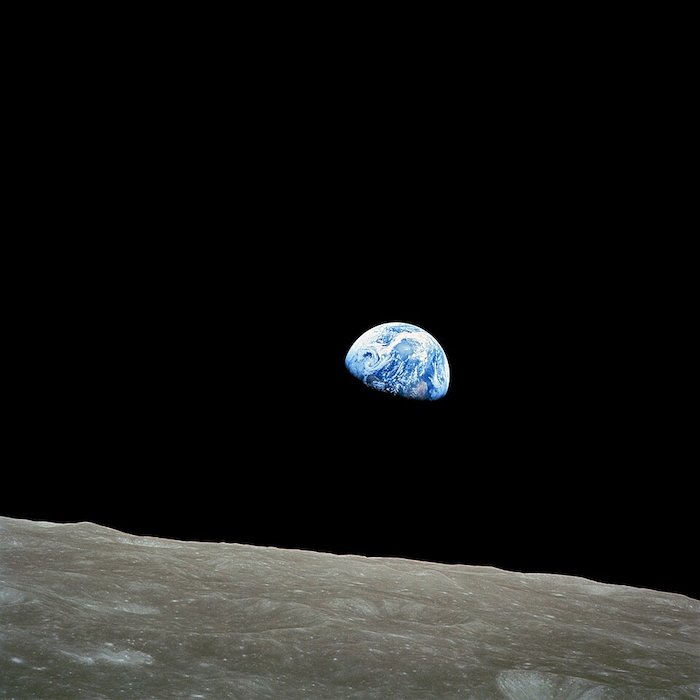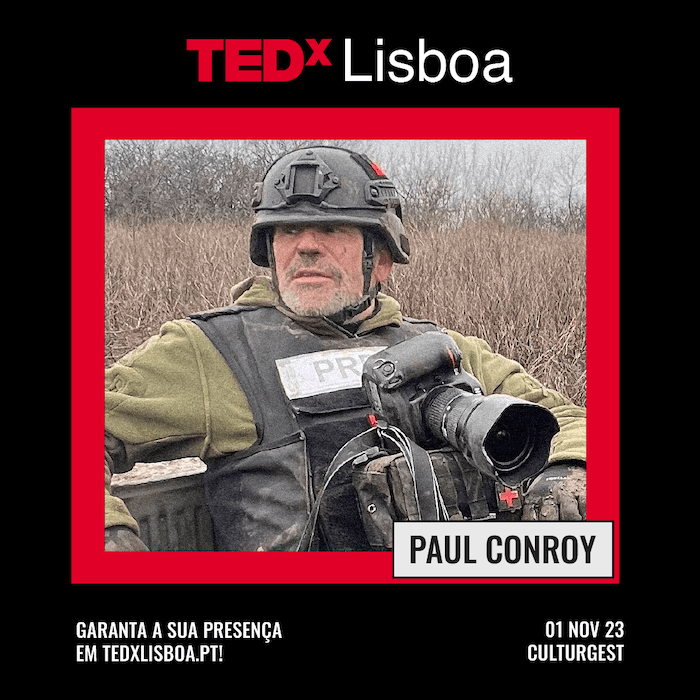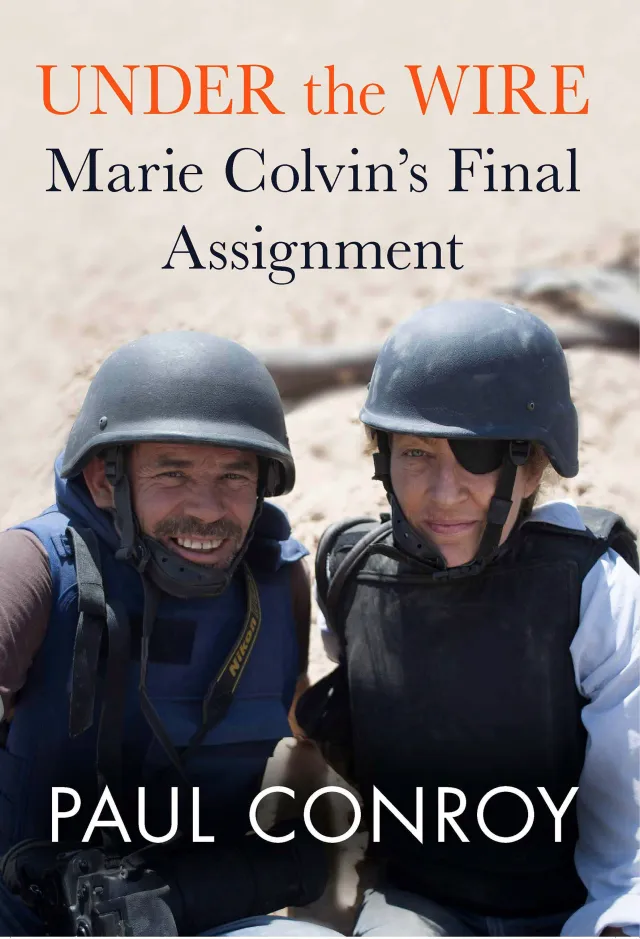Are we heading towards World War III? – Heni Ozi Cukier at TEDxLisboa 2025
World War I — The Great War — The War to End All Wars. With a death toll that exceeded 20 million, many believed it was, and others at least hoped it was, but such was not the case. More than 3 times as many perished during World War II. Afterwards, fewer believed or even hoped it would be the last. The atomic bomb changed everything we thought we knew about war.
The Cold War kept the world on its toes until the dissolution of the USSR in 1991, supposedly bringing that era to and end. And for a while there was a resurgence of hope that humanity had finally turned a corner. Mutual Assured Destruction was supposed to keep us crazy humans in check.
But in his talk at TEDxLisboa in March 2025, professor Heni Ozi Cukier asked the audience to consider the question again: Are we heading towards World War III? On the one hand, answering such a question would consume many hours, if not days, so the challenge from a storytelling perspective was how to do that in less than 18 minutes from the stage.
Beyond the fact that this is one of the most important questions that any of us can ask, Heni’s talk is an excellent example of how to take a very complex topic and present it in a way that general audiences — composed of people who are not experts in geopolitics — can understand.
In short, technological progress brings incredible benefits, but they also breed insecurity, resentment, and uncertainty. Historically, such anxieties have made societies more unstable and vulnerable to extreme ideologies that fuel militarism and war.
Heni does this in two ways. First, he takes us back in time to examine what was happening when previous world wars erupted. In this way we can frame what’s going on in the world today against how events transpired in the past. But even this method involves too many variables, too much complexity, so he highlights four dimensions for the audience to track from past to present:
- social
- economic
- political
- military
Within the first minute, the audience is clear on the topic at hand, the three time periods in question, and the four dimensions that will be reviewed at each stage. In a sense, he’s given them signposts to follow as the narrative unfolds, ensuring they won’t get lost along the way.
If we have the aggressors’ alliance growing stronger and the opposing alliance becoming divided and weak, the incentives for the aggressors to strike, they’re really big.
Follow along with the transcript as you listed to Heni’s talk. Notice how each element is presented in order. How each is explained enough to understand, without over-explaining. And the conclusion does not give us an answer to the question initially posed, but summarizes the current state of world affairs in a way that invites us to do our own research, and come to our own conclusion.
Transcript
History has taught us many lessons, and we should pay attention to its signs because we might be heading towards World War III.
One way to understand today’s events is to look for clues from the past. But cherry-picking historical events to forecast the future is a risky exercise that oftentimes only reinforces our biases. So, I want to do something different. Instead of comparing historical examples with what is happening now, I will examine four major dimensions of life: the social, economic, political, and military dimensions. And I will analyze key trends within each one of those dimensions in three critical moments in history: before World War I, before World War II, and today.
So, let’s begin with the social dimension. And there are many factors that shape societies, but I want to focus on how technological innovations have produced social anxieties and destabilized societies throughout history. Before World War I, the Second Industrial Revolution was transforming life with electricity, cars, phones, mass production, and more. While many celebrated these advances, they also disrupted societies.
For instance, machines replaced workers, and new farming techniques uprooted populations from the countryside. This led to insecurity and resentment. At the same time, traditional authorities such as churches and monarchies, they were questioned at that time. And new mass movements, they emerged, such as labor unions and nationalist leagues. People were afraid that progress was shaking the very foundation of societies.
Moving a little bit ahead, in the interwar years before World War II, technology continued to affect life. The word “robot” was even coined in 1921, and it symbolizes fears of possibly machines substituting human jobs. At the same time, or a little bit later, the famous economist John Maynard Keynes warned us in 1930 of a new disease, namely technological unemployment.
During this period, we had communications revolutions that completely changed public discourse. So, these media became powerful tools for propaganda, polarizing politics, and amplifying social fears. Traditionalists at that time, they were worried that modern culture was simply eroding tradition, family, and religion.
Today, we are going through a technological revolution driven by AI, digital media, and social platforms. The internet, smartphones, and social media have transformed the way we work, communicate, and even think. Psychologists, they debate how digital life is affecting children’s development, while concerns over privacy and surveillance and AI-driven job loss continue to grow. Technologies are spreading ideas across the globe, but also they are amplifying frustrations, fears, and divisions faster than ever before.
In short, technological progress brings incredible benefits, but they also breed insecurity, resentment, and uncertainty. Historically, such anxieties have made societies more unstable and vulnerable to extreme ideologies that fuel militarism and war.
Now, let’s talk about the economics. And I want to present two perspectives on the economics. The first one is related to a common idea that economic prosperity prevents wars. And the argument goes like this. It makes no sense for a nation to go to war and destroy its own wealth. So they don’t want to go to war.
Before World War I, in 1914, Britain dominated global trade and finance. Germany was thriving industrially and expanding its exports. Both countries, they knew that there were no financial benefits that justify the enormous economic costs of going to war. However, World War I taught us a very important lesson.
Economics may explain what can be done, but politics decides what will be done. Fear, ambition, miscalculation, all overrode by even the strongest economic success, showing us that simply war and peace are not decided by economic arguments alone. We have to take into consideration political, ideological, and strategic reasons.
Okay. So, what is going on with the second perspective? And the common perspective says the following. People assume that nations, they want to be wealthy and powerful. It’s not that they don’t want that, they do, but they want something else. It’s better for them if they are wealthier or more powerful than their rivals. Right? So what it matters is the relative power. I want to be more powerful, I don’t want to be just powerful, I want to be more powerful than my enemy or my rival.
Let’s look at what happened at World War II. And in that moment, Germany and Japan, they did not see trade as mutually beneficial. Why? They were gaining less than their rivals: Britain, France, and the US, which made them vulnerable. What was their response? Searching for self-sufficiency and eventually war.
So what is going on today? There are two main ideas that we see all over. The US-China economic interdependence will prevent war. Really? I just told you what happened in World War I. Right? So, economics alone do not determine geopolitical outcomes. We have to consider political, strategic, ideological, and many other factors.
When we think of what is going on after or what happened after the COVID-19 pandemic and Russia’s invasion of Ukraine, at that moment, states realized that it’s too risky to be really dependent on your rival. So, as nations reassess today their economic dependencies, they are all moving towards one thing, or actually two: self-sufficiency and economic nationalism, just like before World War II.
History reminds us that wars are not only caused by economic situations, but we have to take into consideration political factors and relative power.
All right. So, let’s go to the political dimension. Here, I want to talk about polarization. And polarization not only divides societies, but ultimately it might destroy the political order. Polarization comes in many forms: divided media, political battles, legislative deadlocks, contested elections, and its worst form, political violence. And that’s when armed groups emerge because they don’t trust institutions to resolve the disputes of society.
What we have in World War I, before that actually, in the Balkans, there’s a deep polarization, and many nationalist movements clashing against the Austro-Hungarian Empire. And that led to the Serbian group, the secret Serbian group Black Hand, to assassinate the Archduke Franz Ferdinand in 1914, which wasn’t an isolated event. It was the result of years of political violence in a fractured society that triggered World War I.
Now, what do we have before World War II? The same situation. Germany. The Weimar Republic was struggling with escalating polarization, and violence became common. Assassinations of key political figures, such as the Finance Minister in 1921 and the Foreign Minister in 1922, they demonstrated this. Soon, at that time, all political factions from the right, the center, and the left, they had their own militias. And obviously, this brought instability, and we know the rise of authoritarianism and World War II.
What do we have today? Very interesting and scary in some ways. January 6, 2021, the attack on the US Capitol. Some Trump supporters contested the result of the election. That is a clear example where polarization became violent. More recently, several assassination attempts against President Trump. Polarization and violence in the United States is coming from all sides, but this is not only the US.
Let’s look at Germany. There’s a deep surge or a big surge in political violence in Germany. Over the last five years, more than 10,000 attacks on politicians, while the far-right supporters of AfD have committed a lot of attacks against other politicians. The politicians from AfD themselves, they are frequent targets for this political violence. As you can see, the signs are really big. And when we analyze what history shows us, we realize that once armed groups emerge, compromise becomes impossible and conflict inevitable. If polarization nowadays has reached this level, society or the political order is on the brink of collapse.
Now, let’s go to the final dimension, the military dimension. And here I want to focus on alliances because they are key to understanding how conflicts become worldwide disasters. Wars, or world wars, they don’t start as global wars. They begin as regional wars. And then a regional problem becomes this big problem because of the alliances. Let’s take a look at World War I before that. We had a dispute between Austria and Serbia, and because of the alliance, it escalated to become a European war. And once Britain joined, it became a global war.
The same thing happened in World War II. We had three regional conflicts, separated conflicts, initiated by three different countries. Germany won a hegemony in Europe, Italy sought an empire in the Mediterranean and Africa, and Japan wanted to control China and Asia-Pacific. World War II only became a world war when the United States entered the war after the Pearl Harbor attack.
So, how is this related to today? We already have two regional wars: Russia in Ukraine and Iran with its proxy’s wars in the Middle East. And the third one is taking shape as China aims to take Taiwan. Maybe in that third theater, we’re going to see more countries joining. And then, as in World War II, we’re going to have three regional conflicts that become a global war.
There’s another important aspect of alliances, which is the level of integration, how united they really are. This is interesting. When we look at the Axis powers of the 1930s—Germany, Italy, and Japan—they were not allied. Really, actually, they were on opposite sides. When we look at the crisis in Austria in 1934 and in Ethiopia in 1935, Italy was on one side and Germany was on the other. When we look at who was helping China against Japan until late 1938, that was Germany.
And then, comparing this to today, we have a new axis being formed: China, Russia, North Korea, and Iran today. They are all united, like who sends ammunitions, weapons, and even soldiers to help Russia fight Ukraine? North Korea. Who gives food and energy to North Korea? China. Who buys Iran’s sanctioned oil? China. Who buys Russia’s gas? China. And China supplies Russia with electronic equipment to keep its war.
As you can see, the axis of today, which I call the axis of dictatorships, they are really united, much more than the axis of the thirties. And on the other hand, we look at the opposing alliance, which is what? NATO and the democracies, they are falling apart, and they’re breaking, and they are divided.
History tells us that alliances are very important. If we have the aggressors’ alliance growing stronger and the opposing alliance becoming divided and weak, the incentives for the aggressors to strike, they’re really big. I’m not here talking about any inevitable destiny, but I’m looking for historical patterns that help us connect the dots. And with that, we might not repeat the mistakes of the past.
And to end, I want to remind you of the famous aphorism: “History does not repeat itself, but it often rhymes.”
Thank you.
Some final thoughts…
You may have come to your own conclusion regarding Professor HOC’s talk, but as I see it, it’s not a prophecy of doom but a call to action. By understanding the historical patterns that have led to past conflicts, we can be more vigilant in how we address the challenges of our time. It is a reminder that peace is not a given, but something that must be actively pursued and protected. For each of us, this means staying informed, engaging in civil discourse, and holding world leaders accountable for their actions on the global stage.
◆
contact me to discuss your storytelling goals!
◆
Subscribe to the newsletter for the latest updates!
Copyright Storytelling with Impact® – All rights reserved





